The Ultimate South Africa Itinerary: 2 Weeks
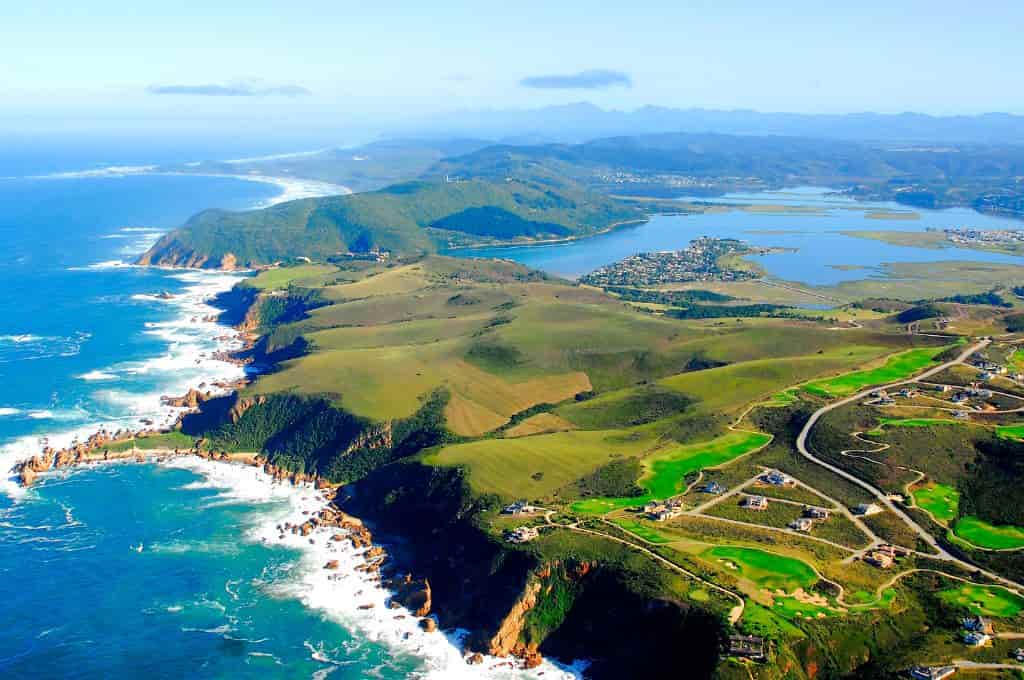
- By Seema
- Updated on January 12, 2025
If you think South Africa is all about wildlife safaris, you’re in for a surprise. The country truly has it all: stunning beaches, cosmopolitan cities, incredible wildlife, breathtaking coastal drives, and UNESCO World Heritage Sites. Delicious local wine, delectable cuisine, and thrilling adventure sports enhance the overall experience. This one-of-a-kind African vacation deserves to be on your bucket list. South Africa is Africa’s most tourist-friendly country, and you are in for a thrilling adventure. Although two weeks may be insufficient to explore South Africa fully, you can still see most of the country’s highlights in this short period. This two-week itinerary provides an excellent introduction to South Africa.
South Africa Itinerary for 2 weeks
There are numerous ways to spend two weeks in South Africa, and no itinerary can be perfect. The suggested itinerary begins in Johannesburg and ends in Cape Town and is undoubtedly one of the best ways to see all of South Africa’s major attractions in 14 days.
South Itinerary Day 1: – Fly Into Johannesburg
Arrive in Johannesburg to begin your South African adventure. If you turn up late in the city, unwind and recover from jet lag. You want to be energized to hit the road the following day. If you have the time, spend the day visiting Johannesburg’s museums and historical sites. The Apartheid Museum, the Wits Art Museum, the township of Soweto (Nelson Mandela’s House), and neighborhood markets are just a few options. The public transportation system is adequate, and taxis must be reserved in advance. Driving is the most convenient and secure mode of transportation in the city. You can also do a self-driving safari in Kruger National Park. Johannesburg is not the safest city, so exercise caution when venturing outside your hotel.

South Itinerary Day 2-4: – Kruger National Park
A safari through Kruger National Park is unquestionably the highlight of any trip to South Africa. The Kruger National Park is Africa’s largest and one of the world’s largest game reserves. The park is extremely popular with visitors due to its easy accessibility and abundance of wildlife.
The distance between Johannesburg and Kruger National Park is approximately 453 kilometers, which takes about 5-6 hours. You can rent a car or hire a private transfer. Kruger does not have a direct bus service. If you leave early, you can go on your first game drive on the same day. The National Park provides excellent opportunities to observe the Big Five (elephant, lion, leopard, rhinoceros, and buffalo) in their natural habitat. Aside from the Big Five, you can see zebras, giraffes, cheetahs, hippopotami, hyenas, crocodiles, deer, and a variety of birds.
Spend the next two days on safari, going on bush walks at dawn, relaxing in your camp or lodge, touring the cultural village, and enjoying regional cuisine and dances. Safaris are held in the early morning, late afternoon, and late evening. Don’t miss the chance. To go on a night safari, as these animals are most active, searching for their prey. You should plan to go on at least three safaris during your stay, as each one will be exciting and different. You might be lucky enough to see lions mating, a leopard pouncing on a deer, animals fighting among themselves, and other rare wildlife encounters.
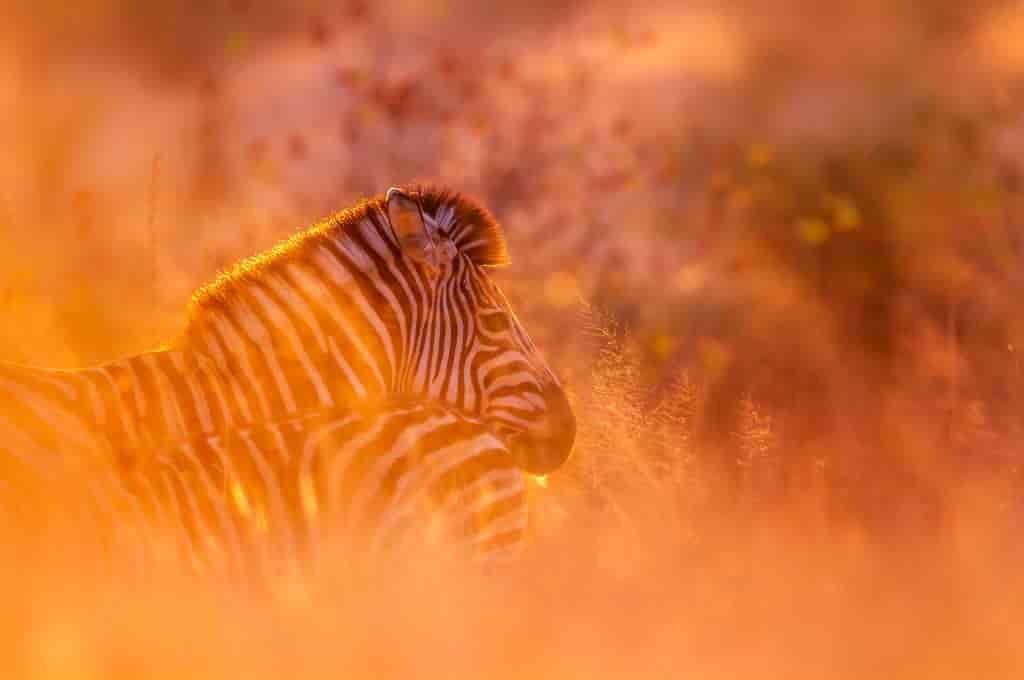
Where to stay in Kruger National Park?
Kruger National Park is divided into two parts. One section is a state-run national park open to the public. Accommodation in Kruger National Park is reasonably priced, with options ranging from campsites and safari lodges to guesthouses and bungalows. You can drive your own car, but you have limited mobility and can’t drive off-road. There are strict operating hours, and visitors are not allowed to explore after sunset.
The other section, known as ‘Greater Kruger Park,’ is located next to Kruger National Park. The fences that divided the two parks were removed in 1993, allowing animals to roam freely between the two wilderness areas. The sightings in both parks are equally impressive; the difference lies in the overall experience. Guests staying in the Greater Kruger Park may visit the Kruger National Park, but not vice versa.
The Greater Kruger Park is divided into private game reserves, each with its own territory. The game reserves share their boundaries, and guided tours can take you anywhere in the unfenced protected park. Vehicles are permitted to travel off the beaten path, conduct night safaris, and set up bush breakfasts and dinners to enhance viewing opportunities. Private reserves offer exclusive, authentic, and less crowded safaris.
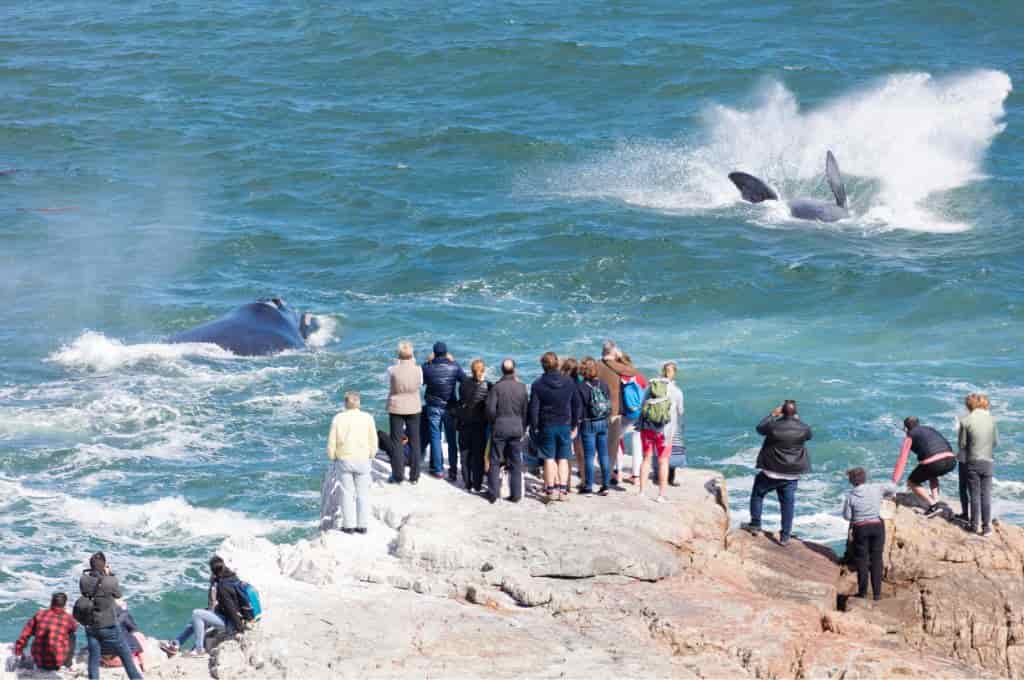
The camps and lodges in the Greater Kruger Park are more luxurious, intimate, and all-inclusive, offering a range of amenities and activities. This is one place where an all-inclusive luxury lodge is well worth the investment. Some of the popular private game reserves in Greater Kruger Park include the Sabi Sand Game Reserve, Klaserie Nature Reserve, Timbavati Private Nature Reserve, and MalaMala Game Reserve.
South Itinerary Day 5: – Johannesburg Via Blyde River Canyon
We’ll be returning to Johannesburg today via the breathtaking Blyde River Canyon. The 26-kilometer-long Canyon is the world’s third-largest canyon and home to a diverse ecosystem. The canyon follows the path of the Blyde River, offering breathtaking panoramic views at every turn, and earning the area the name “Panorama Route.” Choosing to stop here will reward you with stunning views of the dramatic vistas, gushing waterfalls, and striking rock formations. Three Rondavels, The God’s Window, Pilgrim’s Nest, and The Pinnacle are the main highlights. It is one of South Africa’s most beautiful natural landmarks. Stay in Johannesburg overnight.
South Itinerary Day 6: – Port Elizabeth
After a two-hour flight, you will arrive in Port Elizabeth. The overnight bus from Johannesburg to Port Elizabeth takes nearly 13 hours. If you arrive in Port Elizabeth before 2 p.m., you can visit Addo Elephant National Park. Elephant herds live in the park, and on hot days, hundreds can be seen at waterholes. If you’ve had your fill of wildlife in Kruger, you can check out the area’s other attractions. Take a brewery tour, stroll around town, relax on the sun-kissed beaches, or have fun at the Boardwalk Casino Complex.

South Itinerary Day 7-9: – Garden Route
The Garden Route is a 300-kilometer stretch of rocky coastline along South Africa’s southwest coast. It’s one of the world’s most scenic drives, passing through vast wetlands, sandy beaches, charming towns, indigenous forests, idyllic lakes, ancient mountain ranges, vibrant lagoons, and sprawling nature reserves. It is best to rent a car to take in the awe-inspiring landscapes along the way.
There are numerous attractions and rest stops along the Garden Route. The preferred towns are Knysna, Oudtshoorn, Tsitsikamma Forest, Struisbaai, George, Plettenberg Bay, Storms River Village, and Jeffery’s Bay. Based on your plans for the night, you can plan your stops accordingly. Here are my suggestions for the three stops, with one night in each town.
- Knysna –Knysna is a charming holiday town with an interesting selection of accommodations and eateries. It is one of the most popular stops on the Garden Route. You can take a boat cruise to the ‘Heads’, a walking tour of the Featherbed Nature Reserve, or a hike to see the fantastic vistas of the picture-perfect beaches and lush forests.
- Oudtshoorn – Oudtshoorn, South Africa’s ostrich capital, is another loved destination along the Garden Route. The town is well-known for its ostrich farms, where you can learn about the world’s largest birds. Do not miss the Cango Caves. The breathtaking natural wonder is an intricate underground labyrinth filled with narrow stone passageways, expansive caverns, and gigantic stalagmites and stalactites.
- Mossel Bay – The charming harbor town is one of the Garden Route’s many impressive spots. Mossel Bay has numerous hiking trails, historical sites, and miles of windswept beaches. The main attractions are the Cape St. Blaize Lighthouse, Botlierskop Game Reserve, and Santos Beach. Mossel Bay marks the end of the Garden Route.

South Itinerary Day 10: Hermanus
Please leave early, as the drive from Mossel Bay to Hermanus takes approximately 3.5 hours (308 km). The idyllic coastal town of Hermanus, known as the Whale Capital, is widely regarded as the world’s premier land-based whale-watching destination. You can see whales from the shore in Hermanus from July to November. Gearing Point is an excellent spot for spotting southern right whales. You can also book a whale-watching tour to get a close look at whales and dolphins. Visit Fernkloof Nature Reserve for magnificent vistas of Walker Bay as an alternative to whale watching. If you’re up for the challenge, try Great Shark Cage Diving in Gansbaai, a nearby town. Stay in Hermanus for the night.
South Itinerary Day 11-14: – Cape Town
Cape Town, our final destination, is approximately 1.5 hours away. Cape Town, crowned by the majestic Table Mountain and bordered by the pristine white beaches of the southern Atlantic Ocean, is without a doubt one of the most beautiful cities in the world. Also known as the “Mother City,” Cape Town is a vibrant metropolis with awe-inspiring views, fascinating historical landmarks, delectable cuisine, and a bustling nightlife. An incredible city where diverse cultures, landscapes, and cuisines coexist harmoniously. Uber is easily accessible. If you’re looking for an inexpensive way to get around town, the MyCiti Bus is a great option.
From exploring Robben Island, Table Mountain, and Cape Point to visiting nearby wineries, cafes, and shops, Cape Town has plenty to keep you occupied for a few days. We have only three days to explore the city. I’ll compile a list of the most popular activities in Cape Town for you to choose from. You can schedule them to visit two or three attractions in a single day. On the fourteenth day, fly back home from Cape Town International Airport.
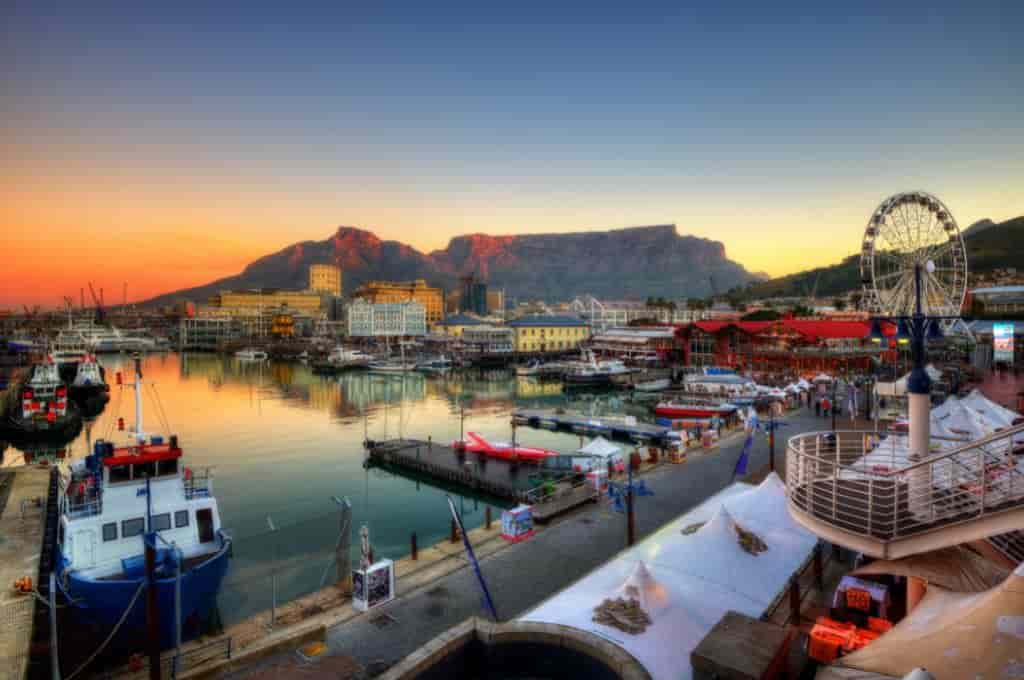
Top Things to Do in Cape Town
- Take a cable ride to the plateau at the top of Table Mountain. You can enjoy fantastic panoramic views of Cape Town, Robben Island, Table Bay, and the Atlantic Ocean from the iconic mountain.
- Explore Robben Island, where Nelson Mandela was imprisoned for 18 years. It is an island in Table Bay and a UNESCO World Heritage Site.
- Plan a day trip to the Cape of Good Hope – a rocky headland on the Atlantic Coast of the Cape Peninsula near Cape Town. The picturesque Chapman’s Peak Drive will take you to Cape Point, where the Atlantic and Indian Oceans meet. En route, take a stopover to admire the African penguins at Boulder’s Beach.
- Visit Western Cape Winelands – one of the world-renowned wine regions that produces excellent, distinctive wines. There are three central regions – Stellenbosch, Paarl, and Franschhoek. Pick one of them, tour the different vineyards in that area, and indulge in wine tasting.
- Head to the colorful neighborhood of Bo Kaap, take some striking pictures, and grab dinner at a Cape Malay restaurant.
- You can take a boat ride to admire the Cape Fur seals at Hout Bay. On weekends, local vendors and artisans sell their products at the Bay Harbor Market.
- Relax, eat, and shop at the V&A Waterfront, home to South Africa’s oldest harbor. It is a favorite hangout for both locals and visitors.
- Hit the beaches. Camps Bay is lined with palm trees and is one of Cape Town’s most popular beaches. You can relax on the white sand, enjoy a picnic, visit the tidal pools, and enjoy the scenic views.
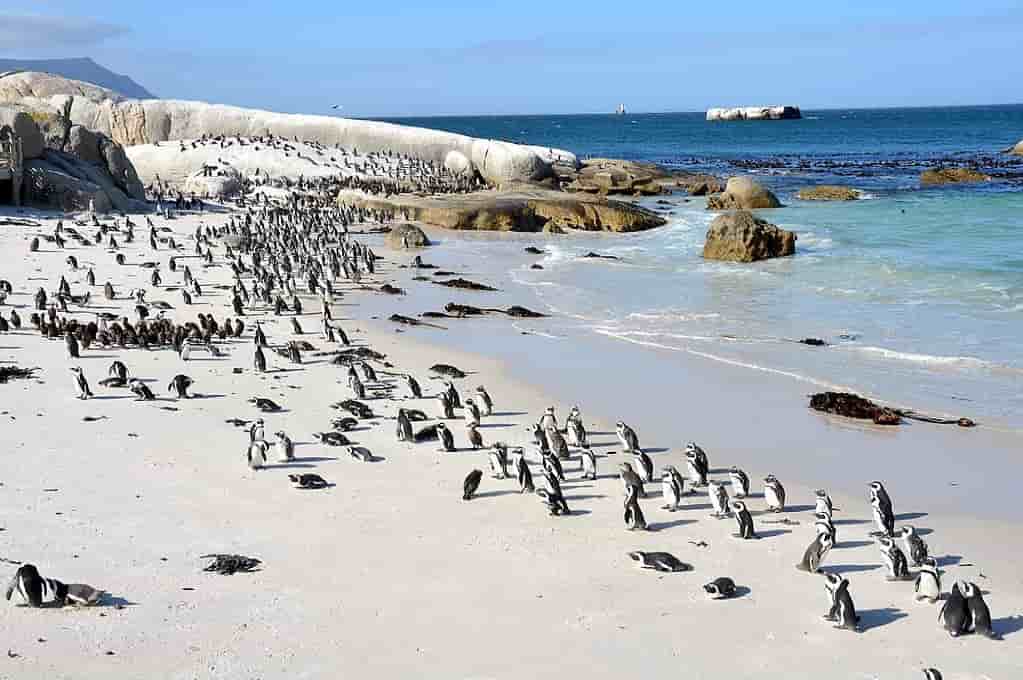
Things to know before visiting South Africa
- November to May is the best time to visit South Africa. November to February is summer in the Southern Hemisphere, with temperatures that are moderate and pleasant. Plan your trip between March and May to avoid the crowds. The winter months (July-November) are suitable for whale-watching. The drier winter months, from May to October, are ideal for game viewing. It gets cold, but you won’t need thermals or anything. Overall, South Africa is a year-round destination.
- The cheapest international flights to Southern Africa typically arrive in Johannesburg or Cape Town.
- Credit cards are widely accepted in South Africa, but you will still need cash throughout your trip. Upon arrival, use the ATM to withdraw money. The machines provide a better exchange rate than a currency exchange service at the airport.
- South Africa is a relatively safe destination. Just be cautious, apply common sense, and refrain from flashing your valuables or walking around after dark.
- Domestic flights in South Africa are reasonably priced, and you should use them to cover long distances during your 2-week vacation.
- Renting a car simplifies life in South Africa. The roads are generally in good condition, all signs are in English, and traffic is well-organized and manageable. Any license printed in English is valid for driving in South Africa. South Africans drive on the left side of the street.
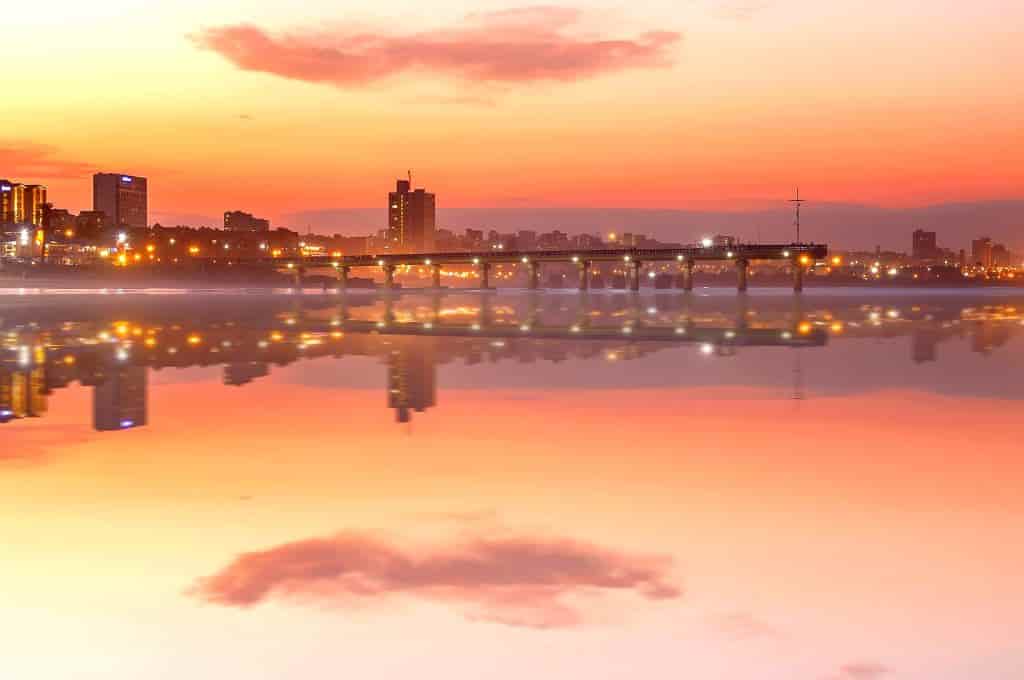
- Carjacking and petty theft from vehicles are pretty common in South Africa. Never leave valuables in your car, and use the services of ‘car-watchers’ who can be found in parking lots. They guard your cars informally.
- Uber is available in most South African cities. It is less expensive than metered taxis while remaining quite reliable and convenient.
- South Africa has a tipping culture, with 10-15% considered acceptable in most establishments.
- Zulu is the most widely spoken language in South Africa, followed by Xhosa and Afrikaans. Most South Africans are multilingual. English may not be spoken, but it is commonly understood in urban areas.
- The South African Rand (R; ZAR) is the country’s official currency. Currently, one dollar is approximately equivalent to 19 ZAR.
- South Africa has some of the cleanest tap water in the world. It’s completely safe to drink directly from the tap.
- Bring insect repellent with you. Many areas in South Africa are malaria risk zones, so consult your doctor and bring the necessary medications.
- Cape Point is not Africa’s southernmost point, as is widely assumed. Cape Agulhas, approximately 200 kilometers southeast, is Africa’s southernmost point.
- Local foods include bobotie, biltong, rabbit chow, and braai (barbecue).

This Post Has One Comment
This is nice informatics for South African travels. Thanks.